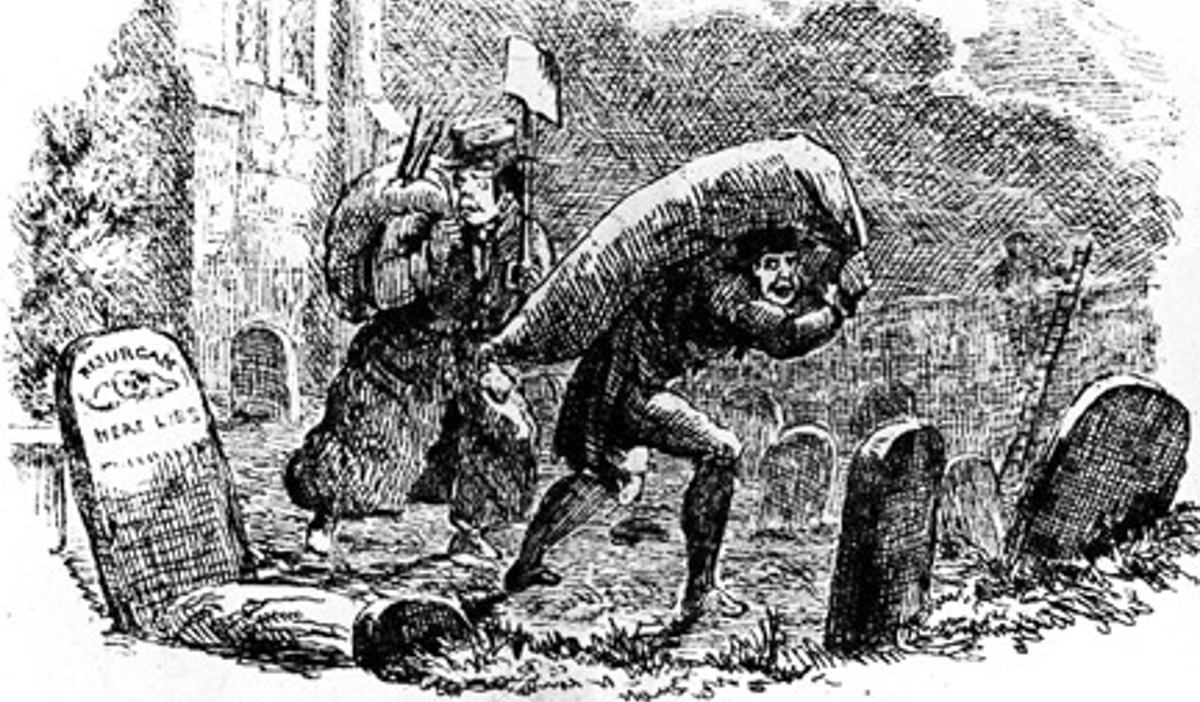The body of John Roll was snatched from his grave in the middle of the night in January 1881. His family and friends managed to discover the name of one of the local men involved in the deed, but the investigation did not end with him. More men, all of them well known in their communities, were discovered to be involved.
The identification of John Heafner as one of those responsible for the removal of John Roll from his grave was a significant break in the case. Heafner, originally from Carroll County, had been living and working in Warren Township since at least 1870. Heafner married Clara C. Aldridge (1858-1929) around 1873, and the couple were raising two children by the time John unwisely took part in stealing John Roll’s corpse.
Under questioning from authorities, Heafner revealed the names of three others who were involved in the affair. All three of the young men were studying to be physicians in Cleveland, and two of them were Tuscarawas County natives from well established families. Their names were William Leggett (1854-1888), William Aldridge (1854-c.1884), and one that Heafner only knew as “Doctor Young.” Aldridge and Leggett had been neighbors of Heafner’s in Warren Township and Aldridge was also Heafner’s brother-in-law.

William Leggett was the son of a prominent Warren Township farmer, and Tuscarawas County pioneer, named William Leggett (1818-1878). The younger William had been studying medicine with a distinguished local practitioner named Dr. Ezekiel P. Buell (1816-1881) and, at the beginning of 1881, was enrolled as a medical student at the University of Wooster’s Medical Department located in Cleveland. Leggett married Mary Baxter (1858-1954) in 1877 and, at the time of the grave robbery, the couple had a young son.
The other local perpetrator was William Aldridge, son of Dr. Nicholas Aldridge (1816-1862) of Union Township. William Aldridge was studying medicine with the local physician Dr. John Hill (1833-1904) while also enrolled in the same class as Leggett at the University of Wooster’s Medical Department. Aldridge was single and, when he was not in Cleveland, he lived in the household of his widowed mother Ann Aldridge (1819-1884) in Warren Township.

The identity of “Doctor Young” is harder to determine, though there are hints that lead to two individuals. There were two men named Young listed on the University of Wooster Medical Department’s list of students in 1881. A Stark County native Senior named Franklin E. Young (1852-1917), who was already practicing medicine, and a Junior named Edwin C. Young (?-?). I have been unable to confirm any details about Edwin C. Young beyond the fact that he was a classmate of Leggett and Aldridge. Given that Heafner referred to the third man as “Doctor Young”, it is likely that it was the former as he was practicing at the time.
Following the detention and questioning of John Heafner, and his identification of the other three men involved, warrants were issued for their arrest. William Campbell (1834-1886), keeper of the Exchange Hotel in New Philadelphia and a friend of John Roll, boarded a train for Cleveland intending investigate and recover the body of his friend. When he arrived in Cleveland, he would discover that there were more men, important men, who played a part in the snatching of John Roll.
We will follow William Campbell’s investigation to Cleveland in part three.

© Noel B. Poirier, 2021.
